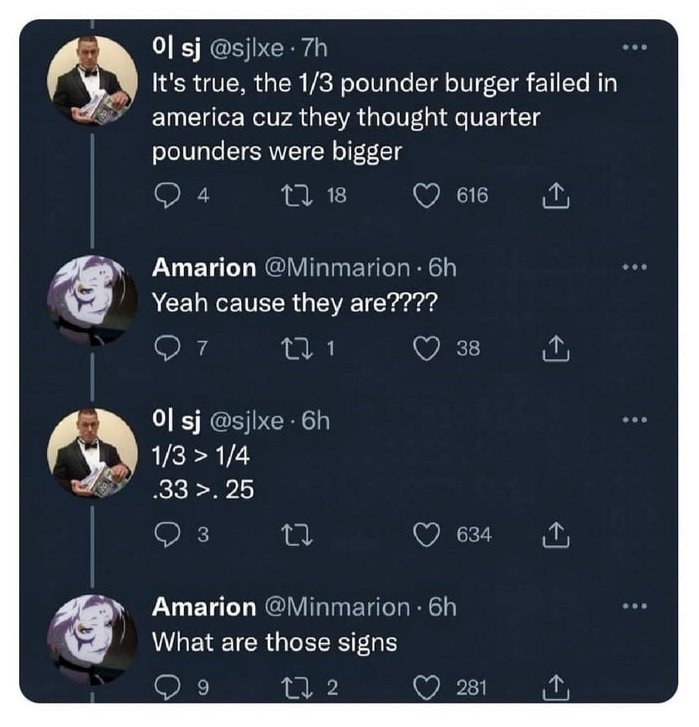this post was submitted on 14 Aug 2024
912 points (96.6% liked)
Facepalm
186 readers
1 users here now
Anything that makes you apply your hand to your face.
founded 6 months ago
MODERATORS
you are viewing a single comment's thread
view the rest of the comments
view the rest of the comments

It doesn't take a ton of mental capacity, but even though I have a good education in math, I still find myself doing the heuristics of assuming that larger digits means larger number. Using fractions for comparing sizes can flip these heuristics. And I think a lot of people are like me, and also that they won't spend a lot of time reading each item on the menu.
Where I'm from, burger sizes are just given in amount of grams, which makes it a lot easier to compare.
Even though fractions makes sense for accuracy in a mathematical point of view, I see no benefit in a practical application.
Fractions are easier to do calculations in your head or on paper than trying to do the same stuff in decimals. E.g. half of 1/2 is 1/4, half of 1/4 is 1/8, half of 1/8 is 1/16, half of 1/16 is 1/32 etc. In decimals this would be 0.5 -> 0.25 -> 0.125 -> 0.0625 -> 0.03125. When building stuff, I find it useful to be able to do that kind of stuff in my head easily.
why use decimals when you can use the... you know, actual weight of the thing?
How is saying “this weighs .25 kg“ not using the “actual weight of the thing”?
I get what you mean, but its adding a useless complexity layer.
If the thing always is smaller than, for example, a kilogram, just use the next measurement unit, a gram. 100g, 200g, 500g, etc.
It's true the other way around, if the thing is always bigger than, for example, a kilogram, use it as is. 1kg, 1.5kg, 4kg, 6.2kg.
For ease of comparison, always use the most significant unit.